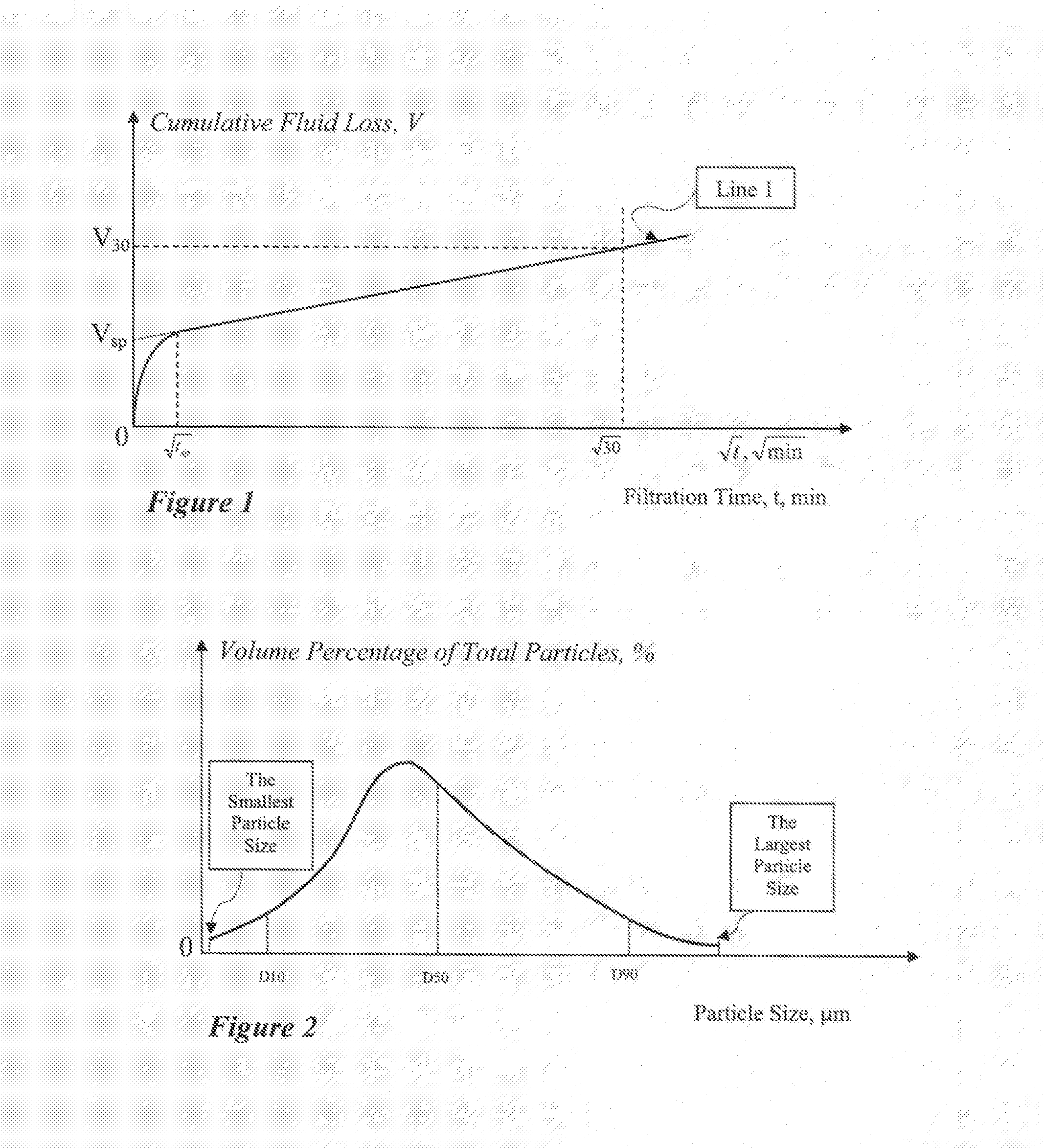Method of Stopping Lost Circulation
a technology of circulation and loss, applied in the direction of sealing/packing, wellbore/well accessories, chemistry apparatus and processes, etc., can solve the problems of formation rock stress collapse of wellbore, inability to allow too high wellbore pressure, and blowout or flow without control, etc., to achieve and fast strengthening of initial seal
- Summary
- Abstract
- Description
- Claims
- Application Information
AI Technical Summary
Benefits of technology
Problems solved by technology
Method used
Image
Examples
Embodiment Construction
I. A Fast Sealing Particulate Formulation
[0034]Fractures or similar voids penetrated by a wellbore may have various widths or sizes. It is therefore advantageous for a sealing particulate formulation to have both large and small particulates. In one embodiment of the present invention, a fast sealing particulate formulation comprises a plurality of particulates with a particle size distribution from small to large. In another embodiment, the particle size of a particulate fast sealing formulation is distributed from 0.5 micron to 3000 micron. In one embodiment, the distribution of the particulate fast sealing formulation has a D90 smaller than 1200 micron. In one embodiment, the distribution of the particulate fast sealing formulation has a D90 smaller than 700 micron. In another embodiment, the distribution of the largest particle size is greater than 250 micron in at least one dimension. In another embodiment, D20 of the distribution of the fast sealing particulate formulation is ...
PUM
| Property | Measurement | Unit |
|---|---|---|
| specific gravity | aaaaa | aaaaa |
| size | aaaaa | aaaaa |
| size | aaaaa | aaaaa |
Abstract
Description
Claims
Application Information
 Login to View More
Login to View More - R&D
- Intellectual Property
- Life Sciences
- Materials
- Tech Scout
- Unparalleled Data Quality
- Higher Quality Content
- 60% Fewer Hallucinations
Browse by: Latest US Patents, China's latest patents, Technical Efficacy Thesaurus, Application Domain, Technology Topic, Popular Technical Reports.
© 2025 PatSnap. All rights reserved.Legal|Privacy policy|Modern Slavery Act Transparency Statement|Sitemap|About US| Contact US: help@patsnap.com

